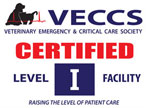Date:
Winter’s rapid approach leads to a good deal of preparation and inconvenience for everyone. Aside from the land-related hassles the season brings, it’s also responsible for an incidence known as “cold stunning” of marine life.
Cold stunning occurs when autumn cold fronts move through and chill coastal water temperatures more quickly than usual, causing cold-blooded sea turtles to go into hypothermic shock. When this happens, sea turtles’ respiration and heart rates slow to dangerously low levels and their immune function becomes compromised.
When the New England coast experienced an unprecedented mass cold-stunning event during the winter of 2014, there were not enough locations in the northeast to treat the massive amounts of sea turtles that needed care. Three such endangered Kemp’s ridley sea turtles – Kingsbury, Prescott and Bud – were flown by private pilots to the South Carolina Aquarium for rehabilitation.
“Cold stunning often results in tissue damage and in some cases, osteomyelitis, an infection of the bone,” said Kelly Thorvalson, Sea Turtle Rescue Program Manager at the aquarium. “Kingsbury, Prescott and Bud were all believed to be suffering from this painful bone infection, which would lengthen their rehabilitation time considerably.”
However, without a CT scan, it is incredibly difficult to recognize such internal issues, particularly in marine life. That’s why the aquarium called on Charleston Veterinary Referral Center (CVRC) – a premier advanced-care veterinary hospital in the region – who has been in partnership with the aquarium for four years now.
“CVRC and its Operations Director Michael Parks have been extremely helpful in allowing the South Carolina Aquarium to transport sea turtles to their facility for CT scans,” continued Thorvalson. “This type of digital X-ray provides much more detailed images of internal bodily structures. By using CT scans of the three turtles, we were able to make an early diagnosis of their osteomyelitis and better understand its severity, ultimately helping to make more timely decisions regarding their treatment.”
As the aquarium is currently not equipped for advanced imaging (CT and MRI), Shane Boylan, DVM reached out to David Sachs, DVM and Medical Director at CVRC and the partnership was forged.
“When Dr. Boylan contacted us, we were happy to oblige,” said Dr. Sachs. “The imaging we do for them is pro bono, so it allows us to give back to a community that has been so welcoming to us. In turn, we’re able to gain a better understanding of these magnificent sea creatures and contribute to their overall wellbeing. In companion animal private practice, we don’t get much exposure to endangered sea turtles, so it’s very exciting for our staff as well.”
Kingsbury, Prescott and Bud were all given CT scans in April of 2015 and were successfully released back into the ocean in June and July of this year.
“We’re grateful for the help that CVRC was able to provide so we could treat and return these turtles to the wild more quickly,” said Thorvalson. “Unfortunately, there is no way to predict how severe a cold-stunning season might be, but all of the organizations that were involved last year are already discussing space, transport, medical plans, staffing and other logistics for this winter. We had an extremely busy summer with a large number of animals that are still with us, so our space is very limited for cold-stunned turtles this winter. Hopefully, there won’t be a need.”








